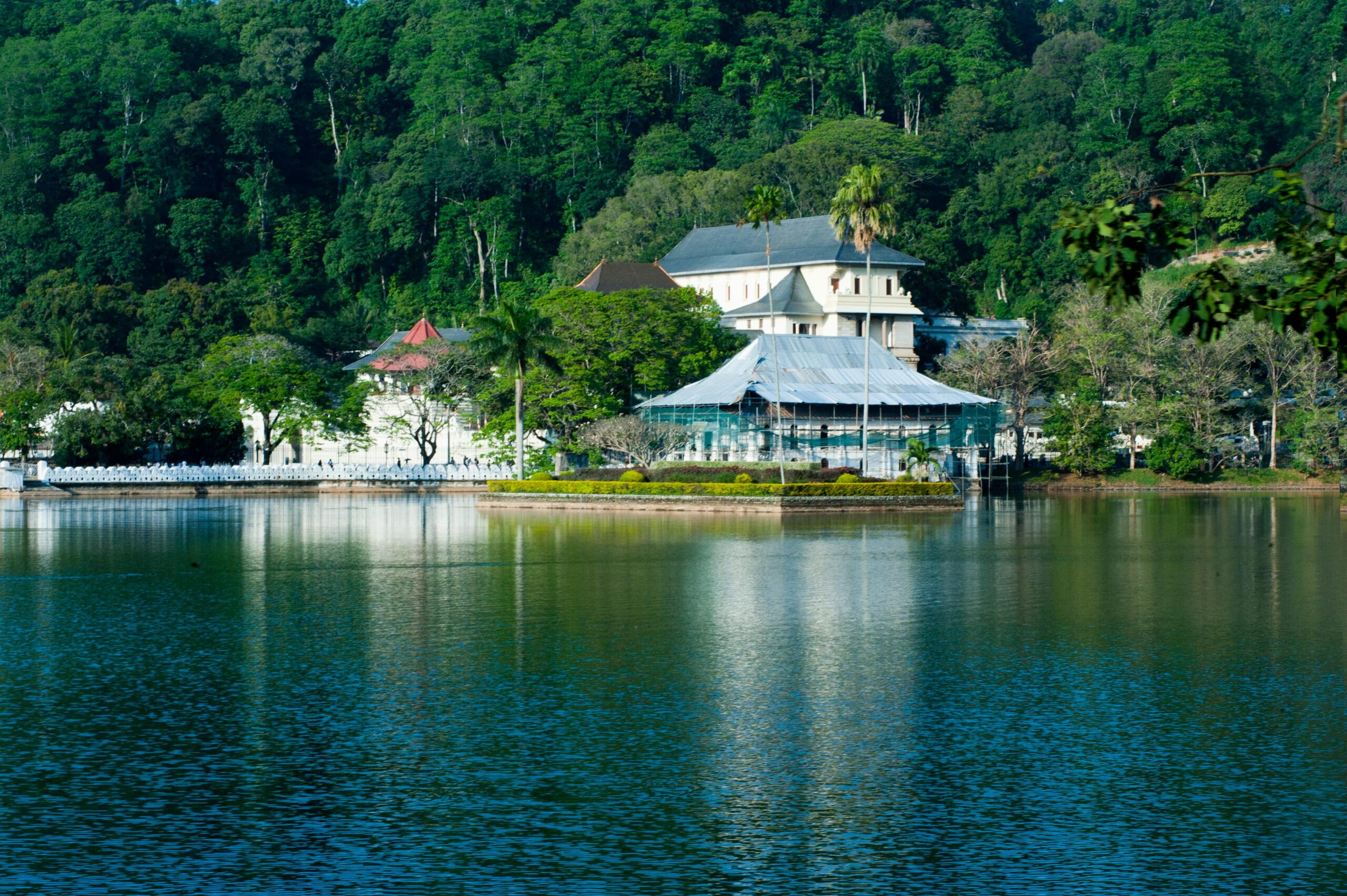Nestled in the misty hills of Kandy, the Sri Dalada Maligawa—better known as the Temple of the Sacred Tooth Relic—is not just a place of worship. It’s a living chronicle of Sri Lanka’s spiritual heartbeat and royal legacy.
A Relic That Shaped a Nation
At the heart of this ornate temple lies a golden casket said to house one of the Buddha’s teeth—a relic so sacred, it once determined the seat of power in ancient Sri Lanka. Kings who possessed the tooth were believed to hold divine right to rule, making the temple not only a spiritual sanctuary but a symbol of sovereignty.
The relic was brought to Sri Lanka in the 4th century by Prince Danta and Princess Hemamala, hidden in the folds of her hair. Since then, it has journeyed through centuries of dynasties, invasions, and devotion, finally resting in the last royal capital—Kandy.
Rituals, Rhythm & Reverence
Visitors are welcomed by the rhythmic pulse of hevisi drums and the scent of jasmine and lotus. Daily pujas (ceremonies) take place at dawn, midday, and dusk, where devotees offer flowers and prayers in a deeply moving display of faith.
Though the relic itself is kept hidden within a golden chamber, the energy of the temple—its chants, its incense, its intricate Kandyan architecture—makes the experience profoundly immersive.
Artistry in Every Corner
The temple’s interiors are a canvas of Kandyan-era murals, lacquered wood carvings, and gilded shrines. The octagonal Paththirippuwa, once a royal viewing chamber, now offers panoramic views of Kandy Lake, whose rippling waters reflect the temple’s serene grandeur.
Nearby, the Royal Palace complex, museums, and the Udawattakele Sanctuary offer layers of history and nature that enrich the visit.
Why It Belongs on Every Traveler’s Itinerary
Spiritual depth: Whether Buddhist or not, the atmosphere invites reflection and peace.
Architectural beauty: A masterclass in Kandyan design and craftsmanship.
Cultural immersion: Witnessing a puja is like stepping into a centuries-old tradition still alive today.





